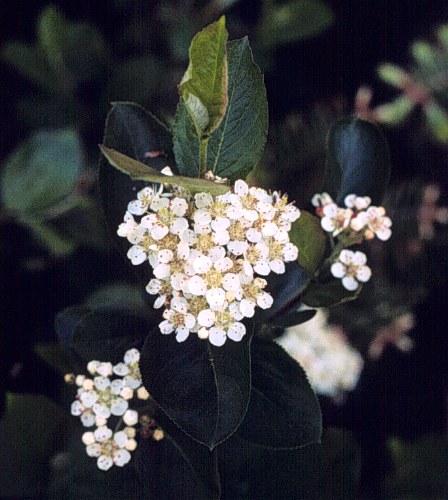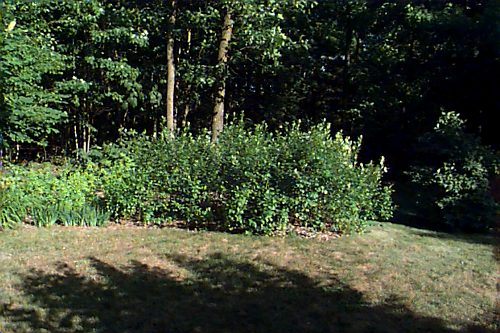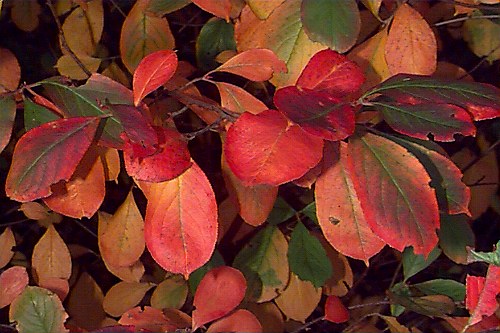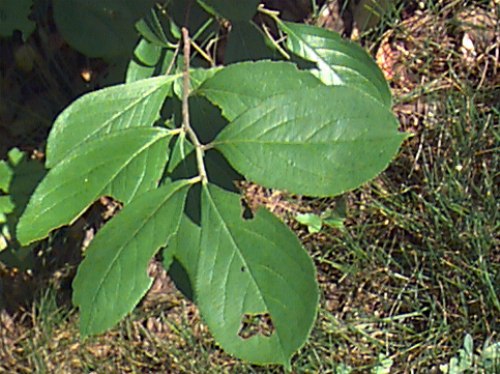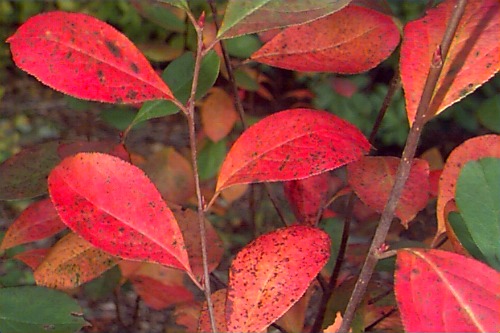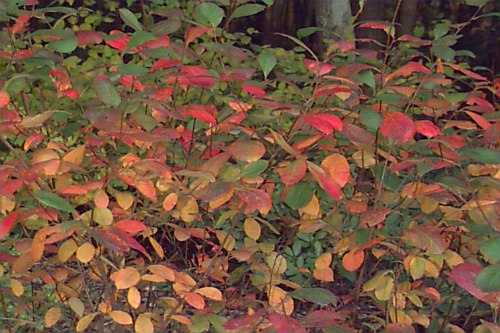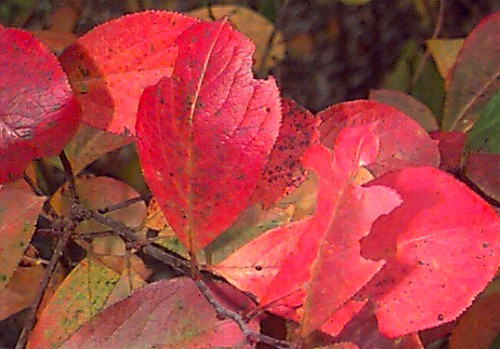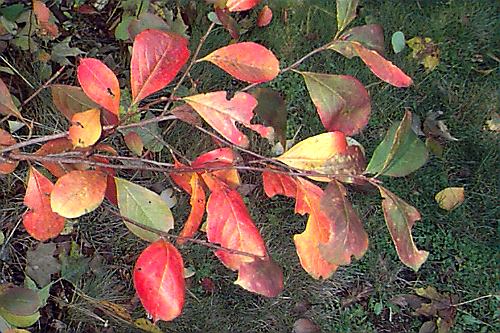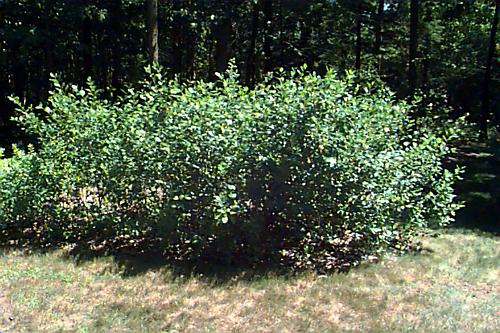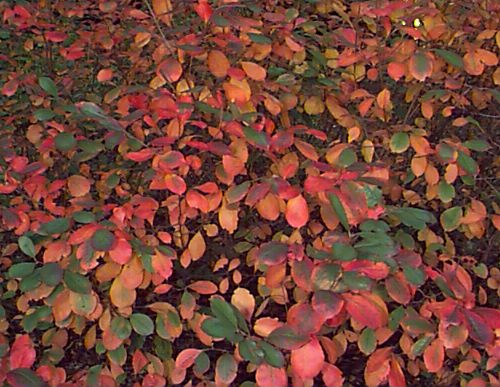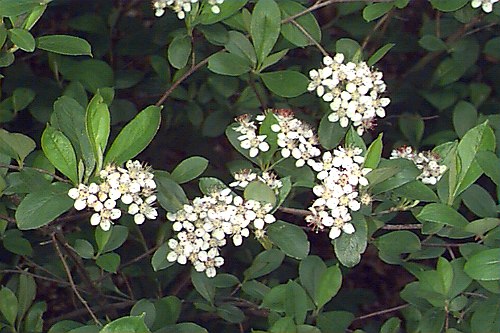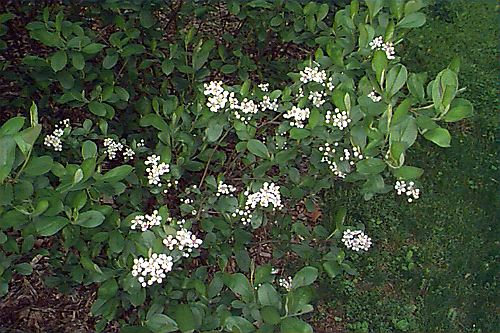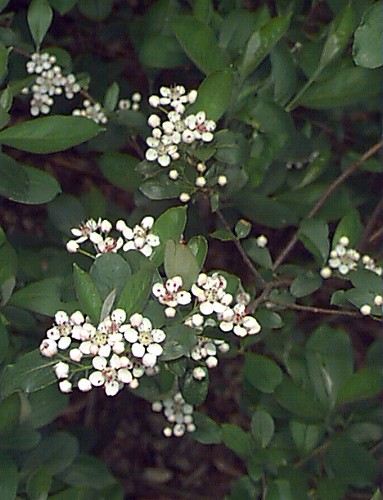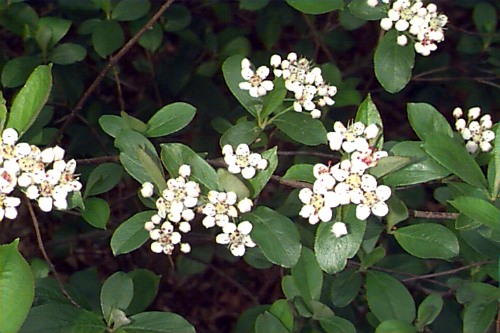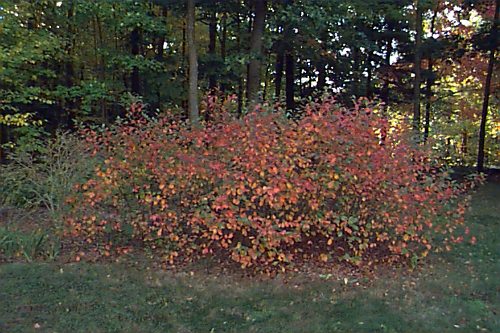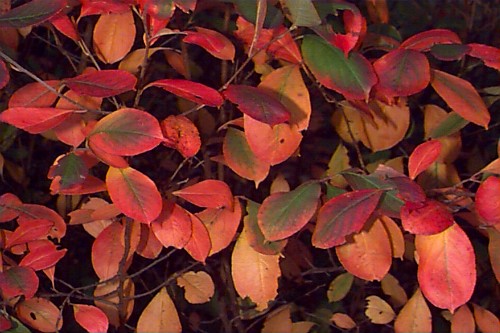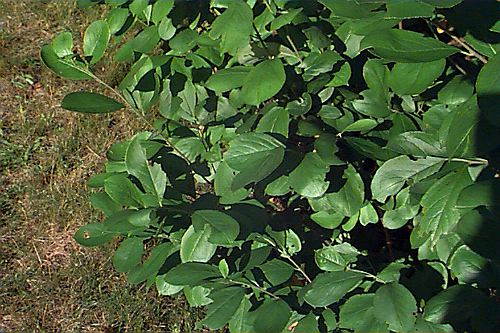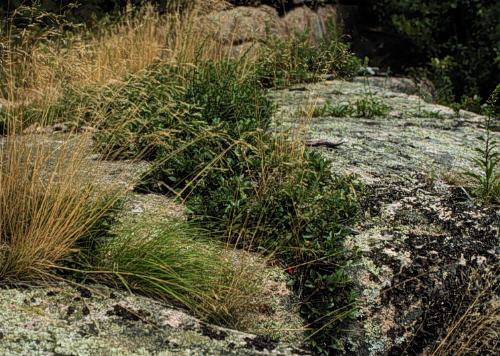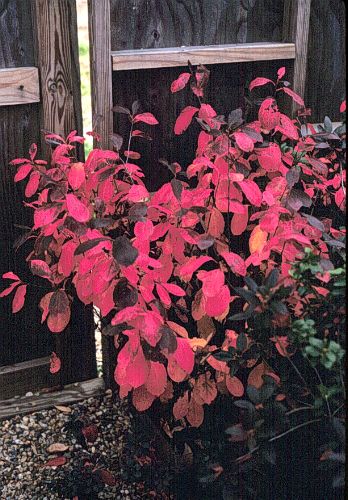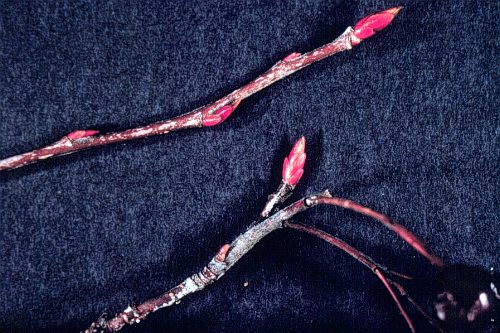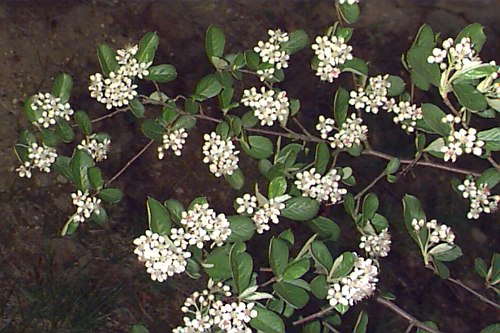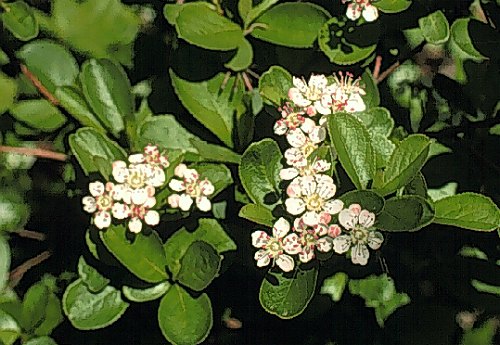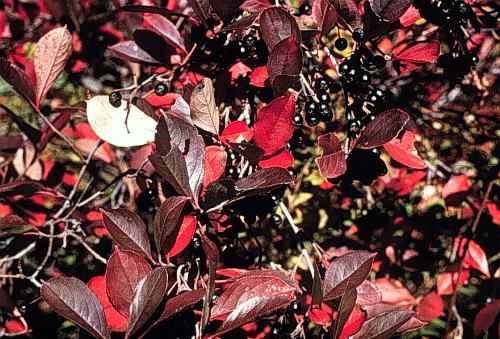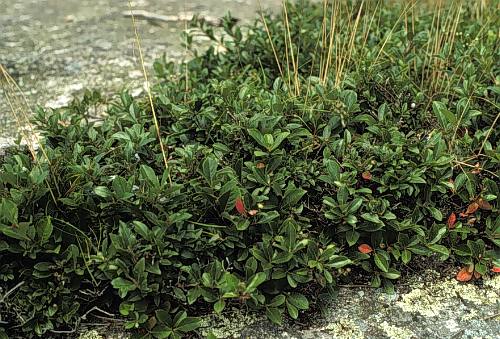Aronia melanocarpa
Black Chokeberry
Rosaceae
ExpandHabitat
- throughout the eastern United States and adjacent southern Canada
- zone 3
- found on a range of sites from dry to swampy
Habit and Form
- generally 3' to 5' tall, but can get larger
- a multistemmed, suckering, deciduous shrub
- forms large colonies and spreads
- texture is medium
Summer Foliage
- good quality, shiny, leathery
- dark green upper surface, light green lower surface
- elliptical with fine, even serrations along the margin
- 1" to 3" long and 0.75" to 2" wide
Autumn Foliage
- orange, burgundy and purple
- dependable and showy, especially in exposed locations
Flowers
- clusters of small, white flowers
- in May, lasting only a week or so
- not overwhelming in bloom, but adds seasonal interest
Fruit
- clusters of purplish-black pome fruit
- 0.3" to 0.5" diameter
- persistent, from September through December
- eaten by birds, but left until after more desirable species have been consumed
Bark
- brown, but stem diameter is small, so unimportant
Culture
- adaptable to many conditions
- tolerant of both dry and wet soils
- easily transplanted and established
- full sun or partial shade, but best flowering, fruiting and fall color in full exposure
Landscape Use
- excellent for fall foliage effect
- multiseasonal due to flowers, high-quality summer foliage, flowers, fruit and fall foliage
- best used in mass plantings or borders
- for naturalistic plantings
- useful for bank stabilization and erosion control
- could be used more
Liabilities
- can get all the problems common to the rose family but I have observed it to be relatively pest and disease free
- tends to spread by suckers
- fruit not as showy as A. arbutifolia, but foliage may be more shiny
ID Features
- suckering habit
- black pome fruit
- twigs glabrous, often with loose waxy, whitish material (compare to pubescent A. arbutifolia twigs)
- undersides of leaves glabrous (compare to fuzzy undersides of A. arbutifolia)
- buds reddish
Propagation
- easy by seed, softwood cuttings, or division of colonies
Cultivars/Varieties
var. elata - A form with larger leaves, flowers and fruits that has a larger mature size (10'-12' tall). Many nurseries claim to grow this form.
'Autumn Magic' - A compact form (3'-5' tall) with good fruit set and bright red-purple fall color.
'Morton' (Iroquois Beauty™) - A dwarf form (only 2' to 3' tall) with ornamental traits similar to the species. Even smaller than 'Autumn Magic', thus useful for bringing multi-season interest to limited spaces.
'Viking' - A mid-sized cultivar averaging between 3' and 6' tall. Observers have noted good foliage quality -- both in summer and fall -- and large black fruit.
